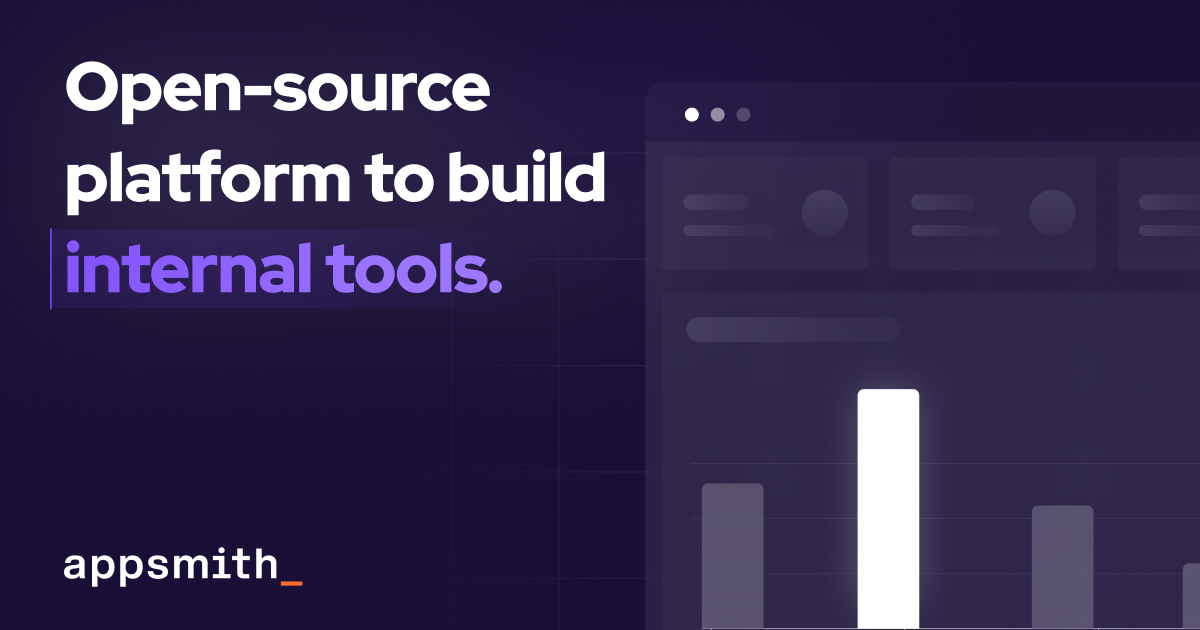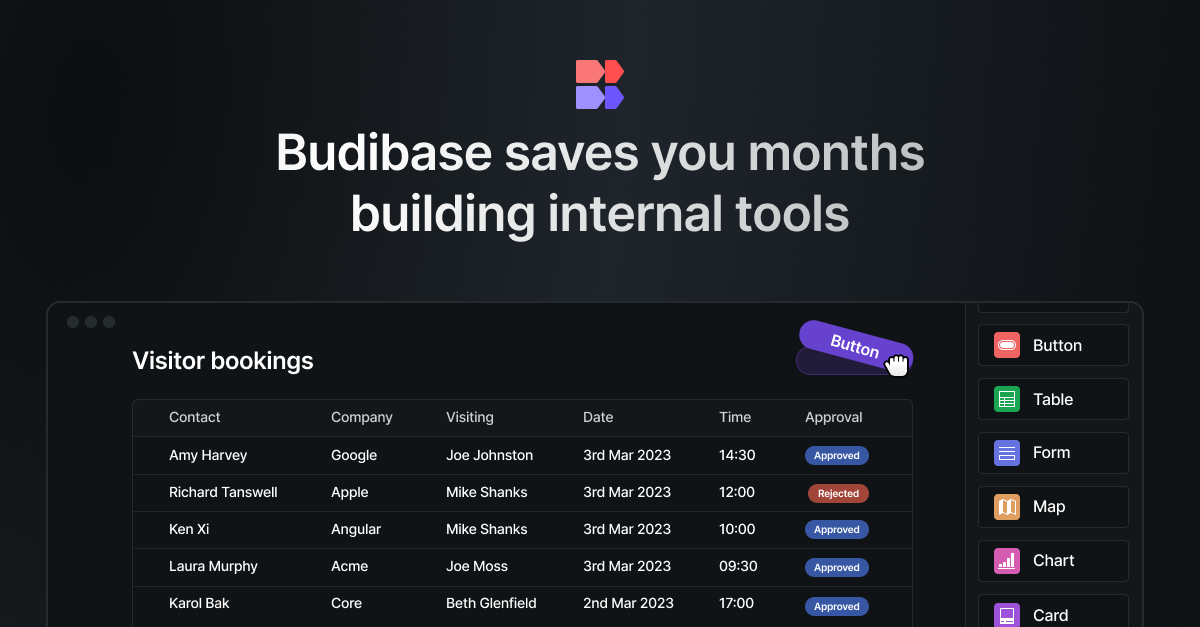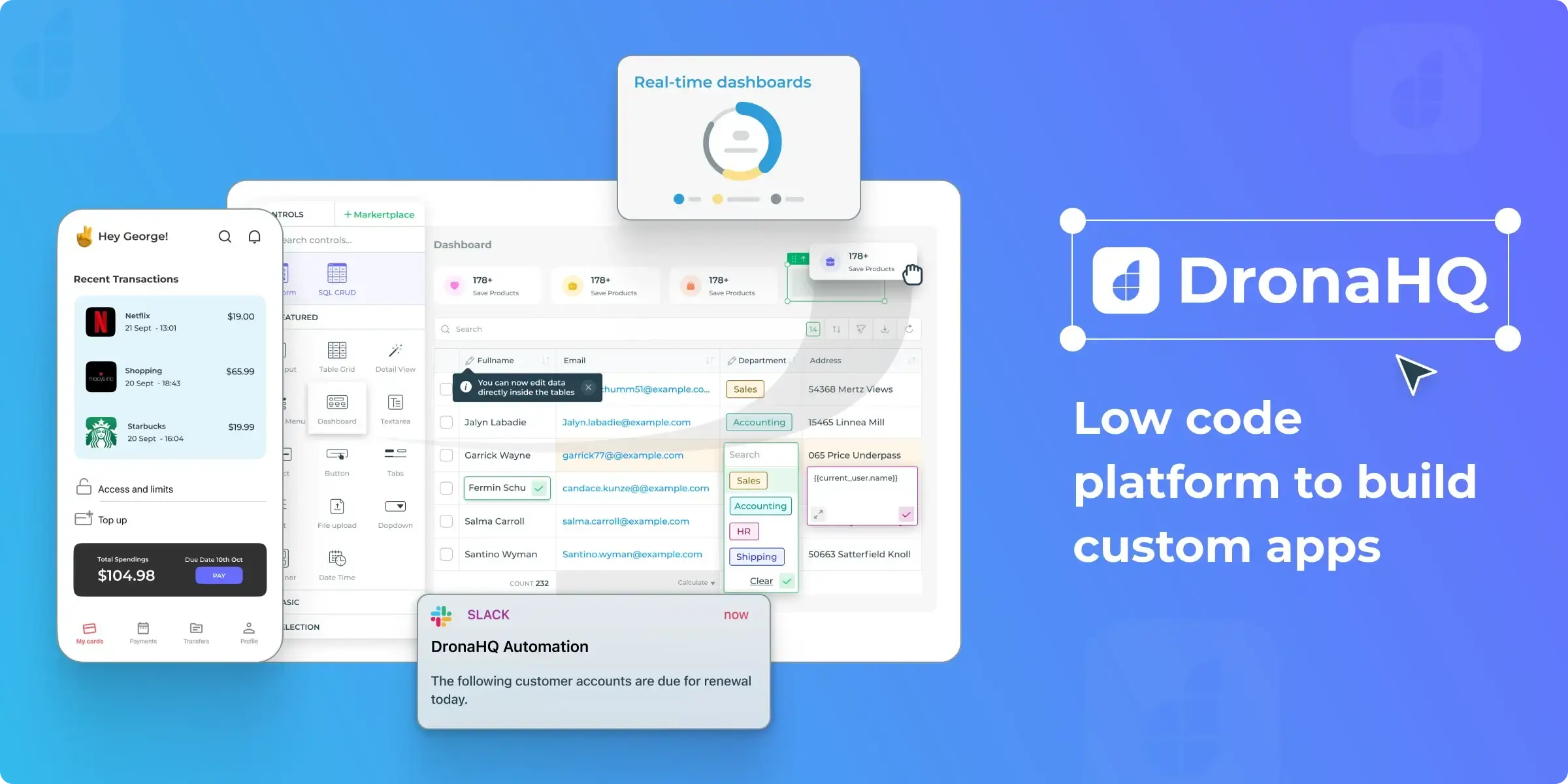Looking to simplify your business processes and automate daily tasks? We do understand – nowadays that is a hassle. Thankfully, there is a ready-to-go solution, Retool Workflows.
In this article, we will dive into the power of Retool Workflows, showcasing how they can not only interconnect different systems but also boost your overall business process efficiency. You will discover four proven workflow solutions built by Akveo, outlined by our low-code expert. Dmitry Sitnik will guide you through them providing practical insights and real-life examples, and showing how you can use these low-code solutions for your projects.
What are workflows?
If you haven’t dove deep into the Retool Universe yet, you might be curious what a workflow is. The Cambridge Dictionary says that a workflow is the way that a particular type of work is organized, or the order of the stages in a particular work process. Funny enough, as an example of how to use this word, the following sentence is provided: ‘The right software tools can improve workflow and productivity’. In my opinion, Retool is ‘that right software’, both literally and figuratively.
Retool Workflows are a powerful visual tool for creating business process automation, that is complemented by the things we all love low-code solutions for, countless built-in connectors for the commonly used services, APIs, and databases, and the flexibility of custom code – both JavaScript and Python.

In other words, you can draw the actual information flow, connecting the data from one business system to another, enriching, processing, or converting it along the way.
How to use Retool workflows – and when?
The example that we have just discussed might look a bit dull and generic – no fun at all! Yes, workflows are generally tailored to provide a robust unattended interconnection between different systems, but let’s think outside the box! Here are some examples of how we at Akveo use workflows to facilitate (un)common clients’ requests: building a simple API, improving application security, processing scheduled data changes, and handling time- and power-consuming tasks in the background. Now sounds funnier? Let’s see!
Case 1. Building a Simple API with Workflows
I bet that a lot of people starting working with workflows are concentrated on how to get data from external sources and then send them back or further. But what if we need not only to get the data but to be ready to receive it from other systems; or to extract some data from a Retool App to use in an external app, without exposing the underlying data source?
Here’s the answer: alongside a cron-like schedule, workflows can be triggered by webhooks, carrying some payload with them. This data can be operated on – processed, read and written, sent. The external service that triggers our workflow will receive a standard HTTP response – you decide, which and how.
A real-life example. We’ve built a billing system for a company that provides educational services for tons of schools across North America. Invoices are generated inside a Retool App, while payments are processed by Stripe. We use webhooks on this project to get the data from Stripe if a particular invoice was paid to close the business operation and mark the deal as finished.

Case 2. Generating Complex Emails Automatically
Let’s continue discussing the previous setup. Just imagine: you create an application for sales or account managers, with a lot of financial and other sensitive data. At some point, a user of your app decides to send a quote or invoice email to a client. This simple action requires a lot of underlying operations: we need to check, if this client has any unpaid invoices, then create a Stripe invoice to process a future payment, then generate a printable PDF, attach it to the email, send it out – and finally change the deal status to ‘Invoice sent’.
We can do this on the app side. But we really shouldn’t. First, such operations will block the app for a while – depending on the number of external services and integrations. People don’t like to wait. Second, we cannot guarantee data integrity – are we sure that the user won’t close the app or even their laptop lid somewhere in the middle of the operation? People still are… just people.
These are two main reasons why we decided to move this complex operation queue to a workflow. A billing user just presses the button ‘Send’ – the app triggers a workflow that performs all the manipulations in the background. Safe and user-friendly!

Case 3. Processing Scheduled Changes
Sometimes we need to divide by time the moment when a user requests a data change and the moment when this change actually happens. Just imagine, you work in HR. After a performance review of an employee, you get information that his or her salary should be, let’s say, doubled starting next month, let it be January. What will you do? Will you take a note on your phone not to forget to log into the HR software on January 1 and actually change the numbers? Or you can just schedule this change. In this case, a record in the new status just sits and waits for its time – when the time comes, a workflow takes this record and puts it in the data table. Voila!
We use this approach on a huge project for an international company with 10,000+ employees in dozens of countries. The company needs all the operations to be SOX-compliant in addition to the four-eyes operational principle, which means that another person should approve changes before they go live. To achieve this, we never alter data directly from the apps, and store change requests as JSONs. They are put into the actual data tables only when approved and when the desired effective date comes. Yes: this work is done by workflows.
.png)
Case 4. Improving App Security
You may have noticed that in the previous example, I mentioned that we never alter data directly from the application. Well, that’s not true: we still need some minor changes to be performed on the app side. But if we speak about sensitive things like creating a request to double someone’s salary, it might not be reasonable to have all the reins of power on the user's side.
Remember, we build web applications, their runtime data can be manipulated. That’s the hard truth: while a web application can run literally on a fridge, it is exposed to vulnerabilities because of this flexibility. That’s why sometimes we need a bit more precautions. For example, instead of writing data directly to a table, you can create a workflow that receives the data from an application, checks it, verifies current user permissions, and only after writes to the database.
This is what we do in the HR suite for That Big Customer. Each change request is packed into a JSON with additional metadata, and then a workflow with this payload is triggered. The workflow checks the input data, calculates the approval level needed, and then creates a record for approval.

Instead of conclusion
As you can see, workflows are not just work and not just flows. I’ve written this dad joke to demonstrate how weak my sense of humor is compared to such a powerful feature as Retool Workflows. Even on the basic plan, you can have 500 runs a month. That’s enough to start experimenting!
Dmitry is the Head of Low-Code Department at Akveo. With a rich background in media and marketing, Dmitry brings an extraordinary look at the world of IT technologies. He is deeply passionate about finding the most effective and elegant solutions to complex client problems. In our blog articles, Dmitry will share his expertise in Retool and other low-code platforms to offer you valuable insights on Retool to enhance business process efficiency.
Streamlining Gifting Marketplace Operations with Retool
Afloat, a gifting marketplace, needed custom dashboards to streamline order management, delivery tracking, and reporting while integrating with Shopify and external APIs.
The solution:
We built two Retool-based dashboards:
- A Retail Partner Dashboard embedded into Shopify for managing orders and store performance.
- An Admin Dashboard for handling deliveries and partner data.
Both dashboards included real-time integration with Afloat's Backend and APIs for accurate, up-to-date data and scalability.
The result: enhanced efficiency, error-free real-time data, and scalable dashboards for high-order volumes.
Billing Automation for a SaaS Company with Low-Code
Our client needed a robust billing solution to manage hierarchical licenses, ensure compliance, and automate invoicing for streamlined operations.
The solution:
We developed a Retool-based application that supports multi-tiered licenses, automates invoicing workflows, and integrates seamlessly with CRM and accounting platforms to enhance financial data management.
The result:
- Achieved 100% adherence to licensing agreements, mitigating penalties.
- Automated invoicing and workflows reduced manual effort significantly.
- Dashboards and reports improved decision-making and operational visibility.
Retool Dashboards with HubSpot Integration
Our client needed a centralized tool to aggregate account and contact activity, improving visibility and decision-making for the sales team.
The solution
We built a Retool application integrated with HubSpot, QuickMail, and Clay.com. The app features dashboards for sorting, filtering, and detailed views of companies, contacts, and deals, along with real-time notifications and bidirectional data syncing.
The result
- MVP in 50 hours: Delivered a functional application in just 50 hours.
- Smarter decisions: Enabled data-driven insights for strategic planning.
- Streamlined operations: Reduced manual tasks with automation and real-time updates.
Lead Generation Tool to Reduce Manual Work
Our client, Afore Capital, a venture capital firm focused on pre-seed investments, aimed to automate their lead generation processes but struggled with existing out-of-the-box solutions. To tackle this challenge, they sought assistance from our team of Akveo Retool experts.
The scope of work
The client needed a tailored solution to log and track inbound deals effectively. They required an application that could facilitate the addition, viewing, and editing of company and founder information, ensuring data integrity and preventing duplicates. Additionally, Afore Capital aimed to integrate external tools like PhantomBuster and LinkedIn to streamline data collection.
The result
By developing a custom Retool application, we streamlined the lead generation process, significantly reducing manual data entry. The application enabled employees to manage inbound deals efficiently while automated workflows for email parsing, notifications, and dynamic reporting enhanced operational efficiency. This allowed Afore Capital's team to focus more on building relationships with potential founders rather than on administrative tasks.
Retool CMS Application for EdTech Startup
Our client, CutTime, a leading fine arts education management platform, needed a scalable CMS application to improve vendor product management and user experience.
The scope of work
We developed a Retool application that allows vendors to easily upload and manage product listings, handle inventory, and set shipping options. The challenge was to integrate the app with the client’s system, enabling smooth authentication and product management for program directors.
The result
Our solution streamlined product management, reducing manual work for vendors, and significantly improving operational efficiency.
Building Reconciliation Tool for e-commerce company
Our client was in need of streamlining and simplifying its monthly accounting reconciliation process – preferably automatically. But with a lack of time and low budget for a custom build, development of a comprehensive software wasn’t in the picture. After going through the case and customer’s needs, we decided to implement Retool. And that was the right choice.
The scope of work
Our team developed a custom reconciliation tool designed specifically for the needs of high-volume transaction environments. It automated the processes and provided a comprehensive dashboard for monitoring discrepancies and anomalies in real-time.
The implementation of Retool significantly reduced manual effort, as well as fostered a more efficient and time-saving reconciliation process.
Creating Retool Mobile App for a Wine Seller
A leading spirits and wine seller in Europe required the development of an internal mobile app for private client managers and administrators. The project was supposed to be done in 1,5 months. Considering urgency and the scope of work, our developers decided to use Retool for swift and effective development.
The scope of work
Our developers built a mobile application tailored to the needs of the company's sales force: with a comprehensive overview of client interactions, facilitated order processing, and enabled access to sales history and performance metrics. It was user-friendly, with real-time updates, seamlessly integrated with existing customer databases.
The result? Increase in productivity of the sales team and improved decision-making process. But most importantly, positive feedback from the customers themselves.
Developing PoC with Low Code for a Tour Operator
To efficiently gather, centralize, and manage data is a challenge for any tour operator. Our client was not an exception. The company was seeking to get an internal software that will source information from third-party APIs and automate the travel itinerary creation process. Preferably, cost- and user-friendly tool.
The scope of work
Our experts ensured the client that all the requirements could be covered by Retool. And just in 40 hours a new software was launched. The tool had a flexible and easy-to-use interface with user authentication and an access management system panel – all the company needed. At the end, Retool was considered the main tool to replace the existing system.
Testing New Generation of Lead Management Tool with Retool
Our client, a venture fund, had challenges with managing lead generation and client acquisition. As the company grew, it aimed to attract more clients and scale faster, as well as automate the processes to save time, improve efficiency and minimize human error. The idea was to craft an internal lead generation tool that will cover all the needs. We’ve agreed that Retool will be a perfect tool for this.
The scope of work
The project initially began as a proof of concept, but soon enough, with each new feature delivered, the company experienced increased engagement and value.
We developed a web tool that integrates seamlessly with Phantombuster for data extraction and LinkedIn for social outreach. Now, the company has a platform that elevates the efficiency of their lead generation activities and provides deep insights into potential client bases.
Building an Advanced Admin Portal for Streamlined Operations
Confronted with the need for more sophisticated internal tools, an owner of IP Licensing marketplace turned to Retool to utilize its administrative functions. The primary goal was to construct an advanced admin portal that could support complex, multi-layered processes efficiently.
The scope of work
Our client needed help with updating filters and tables for its internal platform. In just 30 hours we've been able to update and create about 6 pages. Following features were introduced: add complex filtering and search, delete records, styling application with custom CSS.
Together, we have increased performance on most heavy pages and fixed circular dependency issues.
Creating MVP Dashboard for Google Cloud Users
Facing the challenge of unoptimized cloud resource management, a technology firm working with Google Cloud users was looking for a solution to make its operations more efficient. The main idea of the project was to create an MVP for e-commerce shops to test some client hypotheses. Traditional cloud management tools fell short.
The scope of work
Determined to break through limitations, our team of developers turned Retool. We decided to craft an MVP Dashboard specifically for Google Cloud users. This wasn't just about bringing data into view; but about reshaping how teams interact with their cloud environment.
We designed a dashboard that turned complex cloud data into a clear, strategic asset thanks to comprehensive analytics, tailored metrics, and an intuitive interface, that Retool provides. As the results, an increase in operational efficiency, significant improvement in cost management and resource optimization.
Elevating CRM with Custom HubSpot Sales Dashboard
Our other client, a SaaS startup, that offers collaborative tools for design and engineering teams, was on a quest to supercharge their sales efforts. Traditional CRM systems were limited and not customizable enough. The company sought a solution that could tailor HubSpot to their workflow and analytics needs.
The scope of work
Charged with the task of going beyond standard CRM functions, our team turned to Retool. We wanted to redefine how sales teams interact with their CRM.
By integrating advanced analytics, custom metrics, and a user-friendly interface, our developers provided a solution that transformed data into a strategic asset.
In 40 hours, three informative dashboards were developed, containing the most sensitive data related to sales activities. These dashboards enable our customer to analyze sales and lead generation performance from a different perspective and establish the appropriate KPIs.
Building a PDF Editor with Low-Code
Our client, a leading digital credential IT startup, needed a lot of internal processes to be optimized. But the experience with low-code tools wasn’t sufficient. That’s why the company decided to hire professionals. And our team of developers joined the project.
The scope of work
The client has a program that designs and prints custom badges for customers. The badges need to be “mail-merged” with a person’s info and turned into a PDF to print. But what is the best way to do it?
Our developers decided to use Retool as a core tool. Using custom components and JavaScript, we developed a program that reduced employees' time for designing, putting the data, verifying, and printing PDF badges in one application.
As a result, the new approach significantly reduces the time required by the internal team to organize all the necessary staff for the conference, including badge creation.




















